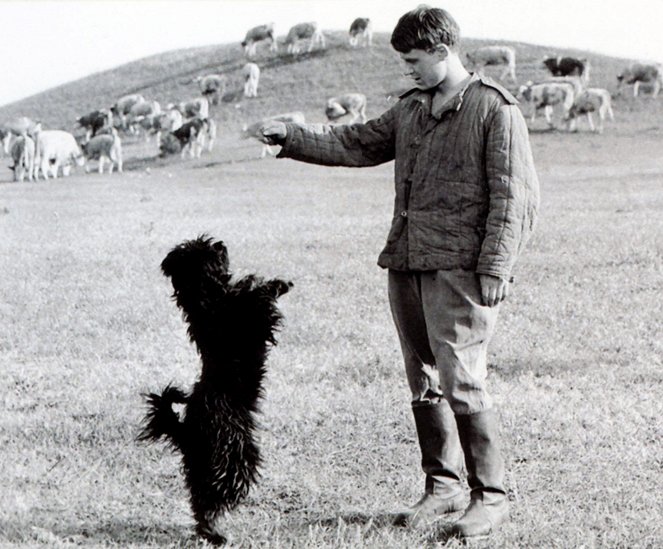Kuvaus:
Tamás SomlóSävellys:
Zoltán JeneyNäyttelijät:
András Kozák, Sergey Nikonenko, Lajos Őze, József Madaras, Béla Barsi, János Görbe, Zoltán Gera, Mari Csomós, Bertalan Solti, Tibor Molnár (lisää)Juonikuvaukset(1)
Seventeen-year-old Jóska is captured by the Soviet in the last days of World War II. He is posted to a soldier lad to help him guard the cowherd. Jóska tries to escape, Kolja keeps him from entering the mined area using his gun. Despite their opposed position and language barrier a friendly relationship is formed between them. They feast on the meat of the exploded cow together and chase girls when Kolja suddenly dies of a former injury. Jóska tries to get to the station dressed in his uniform. Some of the former POWs recognize him and thinking that he was a collaborate they beat him up thoroughly. (jakelijan virallinen teksti)
(lisää)Arvostelut (2)
In terms of composition, a non-classical presentation of great humanistic ideas that should be no problem for the perceptive viewer to tune in internally. Sometimes, it’s difficult to tune in to Janscó's directorial style, which loosely connects a series of events without addressing the larger plot (though not nearly as much as in The Red and the White, where the connecting element of the protagonist was not even present), but still, it’s impossible to imagine any other filmmaker capable of conveying a similarly poetic view of the shape of humanity in the midst of a serious conflict. Jancsó manages like few others to relegate all the most pressing horrors to off-screen space or to the background of the mise-en-scène, so as not to disturb the continuity of the editing and at the same time to preserve their unpleasant effect. 80%
()
A young middle school student wanders through a country where the war just ended, but the army has not yet left. You could say that the young man's youthfulness prevents him from saying goodbye to the war, as if he is moving between the desire to get home to safety and on the other hand, participating in the enterprise of real men (like when he puts on an abandoned uniform - is it because he is cold, or does he want to wear the uniform, to be seen as a soldier, even if he will surely be captured?). Later, the occupying army does indeed capture him. He behaves like a true soldier and a Hungarian. He tries to escape from the Russians, or rather from a Russian. But then the screenwriters and the director show an example of universal reconciliation. The law dictating the young man's behavior changes. He no longer acts like a Hungarian, like a soldier (which are categories dividing, generalizing, and heteronomous people), but like a Human. Indeed, a true human helps others regardless of nationality or uniform. Cinematographer Tamás Somló once again showed himself in full glory.
()

